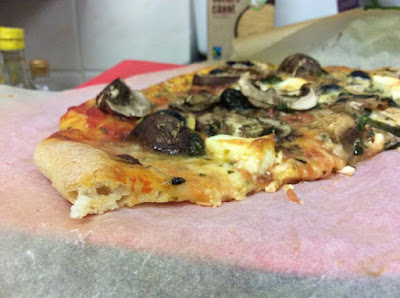I experienced this interesting fresh Vietnamese salad at a friend's dinner and wanted to know how they made the sauce. As I'm vegetarian I can't use garlic. The dish is called Bun Chay. They said to mix vinegar, sugar and soy sauce.
So I started to make it and it first tasted horrible as I didn't know how to make it. Then another friend told me you need to use the right portions. The 1:2:3 rule she calls it.
1: Sour/Salt
2: Sugar
3: Water
Basically you want to have a small amount of sour and salt, then more sugar to balance out the sourness and then a lot of water to dilute it.
So I tried that with the following recipe for the sauce and it's pretty ok.
1: sour/salt
- 2 large limes (or about 4 table spoons)
- 4 table spoons soy sauce
- 1 table spoon rice vinegar
- some chili
- some shredded carrot
- lemongrass
2: sugar
- 8 table spoons granulated sugar (you can use less if you don't like sugar, you can use more if you don't like sour taste)
3: water
- 12-50 table spoons hot water (Some people don't like the strong sauce and want it to be diluted more. I use 30 table spoons.)
As for the vermicelli and salad, it's very easy. Just cook some vermicelli and add cilantro, Thai basil, mint, peanuts, lettuce, carrots, cucumber, bean sprouts, tofu, fried spring rolls, vegetarian meat, whatever you like.
So I started to make it and it first tasted horrible as I didn't know how to make it. Then another friend told me you need to use the right portions. The 1:2:3 rule she calls it.
1: Sour/Salt
2: Sugar
3: Water
Basically you want to have a small amount of sour and salt, then more sugar to balance out the sourness and then a lot of water to dilute it.
So I tried that with the following recipe for the sauce and it's pretty ok.
1: sour/salt
- 2 large limes (or about 4 table spoons)
- 4 table spoons soy sauce
- 1 table spoon rice vinegar
- some chili
- some shredded carrot
- lemongrass
2: sugar
- 8 table spoons granulated sugar (you can use less if you don't like sugar, you can use more if you don't like sour taste)
3: water
- 12-50 table spoons hot water (Some people don't like the strong sauce and want it to be diluted more. I use 30 table spoons.)
As for the vermicelli and salad, it's very easy. Just cook some vermicelli and add cilantro, Thai basil, mint, peanuts, lettuce, carrots, cucumber, bean sprouts, tofu, fried spring rolls, vegetarian meat, whatever you like.


















